PET scan
1/60
There's no tags or description
Looks like no tags are added yet.
Name | Mastery | Learn | Test | Matching | Spaced |
|---|
No study sessions yet.
61 Terms
What does SPECT stand for?
‘Single Photon Emission Commuted Tomography’
How many photons does a SPECT pick up on?
Picks up on 1 photon per interaction with the camera
What type of energy interaction does a PET camera pick up on?
Picks up on the energy emitted from an annihilation interaction between an electron and a positron that’s lost energy – positively charged electron
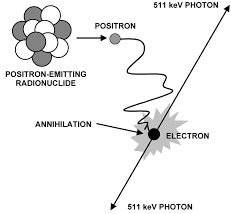
What type of decay does a positron come from? (what is it a byproduct of)
Is a byproduct of beta positive decay
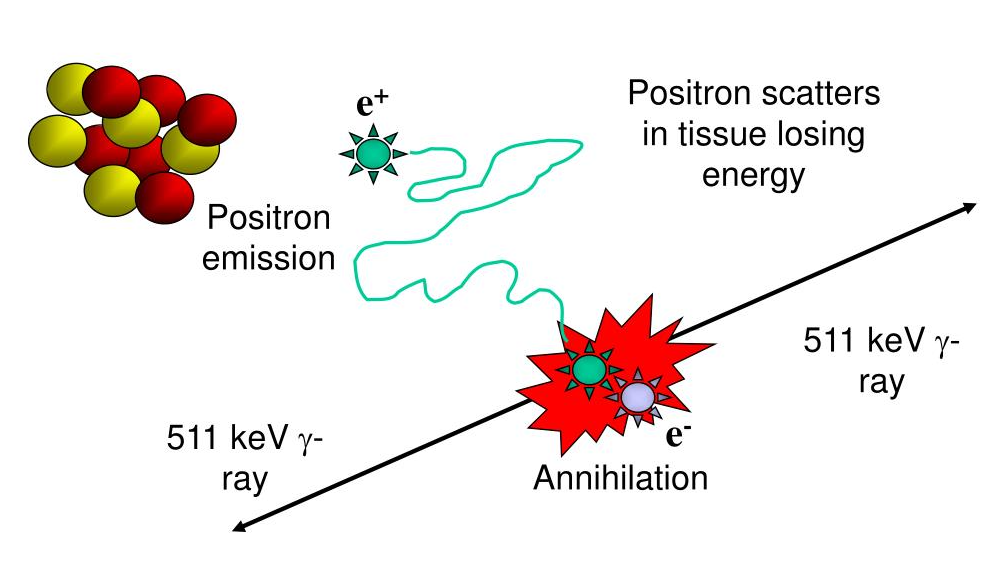
Can you elaborate on how beta positive decay works or takes place? (type of parent, what happens in the nucleus, and what happens to the byproduct)
The parent is unstable and has too many protons → will convert one of the protons into a neutron
As consequence of this conversion, it will create a positron as a byproduct that will get ejected from the nucleus
The positron will travel a length of distance – losing energy until it becomes a positively charged electron
It will then interact with a negatively charged electron and cause an annihilation reaction
What is rest mass?
Rest mass is what occurs when the positron has traveled a distance and runs out of energy – is now mainly made up of mass
How many photons are made during an annihilation reaction?
2 photons are emitted – one is equal to 511 keV
What is the total energy made when an annihilation reaction occurs?
1.02 MeV – 511 keV + 511 keV
What needs to take place before an annihilation reaction happens?
The positron needs to have reached its rest mass – or else the photons made would be more than 511 keV
If I had a positron made by F-18 vs Ga-68, would they be the same to one another?
No, not all positrons are the same as each one made is by a different parent decay – will have a different amount of energy due to the number of protons in the parent nucleus
What happens if the positron has a lot more energy?
It will be able to travel a farther distance
How many photons does a PET camera pick up on?
Picks up 2 photons – the photons emitted from an annihilation reaction
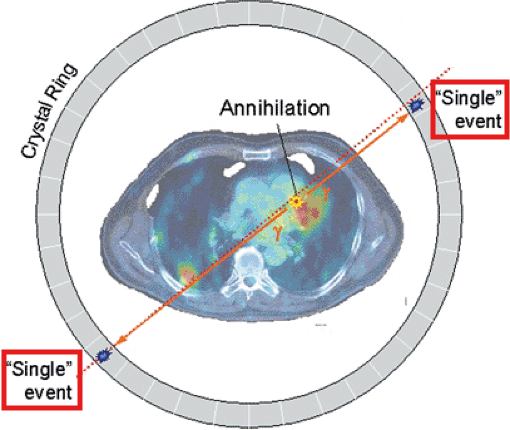
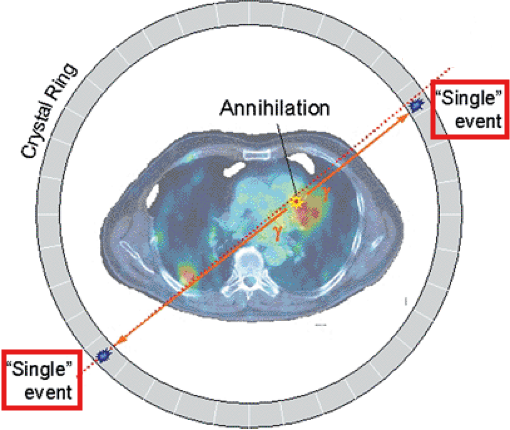
What is the relationship between each detector pair inside the ring of detectors in a PET camera?
Each detector works together with the detector opposite to it – allows it to pick up on a line of response
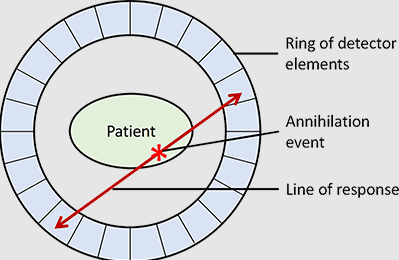
What is a line of response?
When the photons from an annihilation reaction are emitted, they will travel in opposite directions of one another – makes a 180-degree line almost
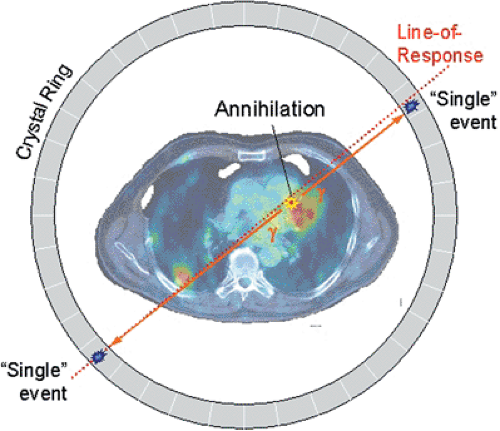
How does a ‘dot’ from our image translate from the reaction at the PET detectors?
The detectors create a dot on our scanned image from the point at which the 2 photons are overlapping – or where they cross each other in the ring of detectors but we still need more information to specifically determine it!
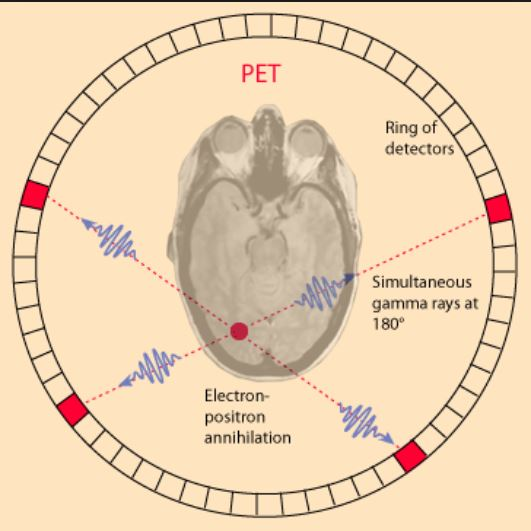
What is needed in order for the PET detectors to determine where an annihilation reaction occurred on a line of response?
Requires multiple line of responses to figure out where the intersection of where the annihilation reaction took place
Is a line of response able to determine where the photon originated from?
No, it’s only able to determine where the annihilation took place
Cannot tell us where the positron was ejected from as it will travel away from the original nucleus
What are the 3 types of errors that PET scanners are associated with?
Error associated with the distance that the positron travels before the annihilation occurs – affects the line of response
Non-colinearity or acolinearity
Random coincidence
What is one source of PET error that we’re able to correct for?
Scatter coincidence as this will mainly effect the energy of the photon. Detectors are mainly looking for photons that are within an acceptable range of 511 keV — too low of an energy and the photon will be rejected
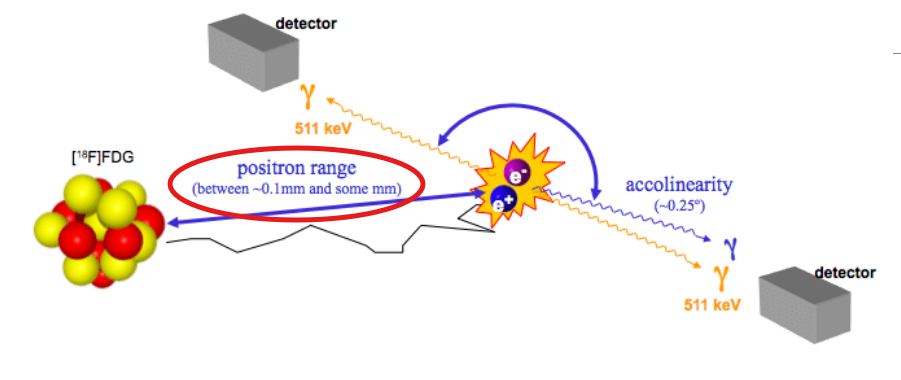
Elaborate on why there is error associated with PET specific to the distance that the positron travels prior to annihilation
When the positron is made as a byproduct of beta positive decay, it’s ejected from the nucleus and will travel a distance away due to it being high in energy
As a PET camera detects annihilation reactions, every line of response it detects will have around 0.1 mm of error from the range of the positron traveling a distance
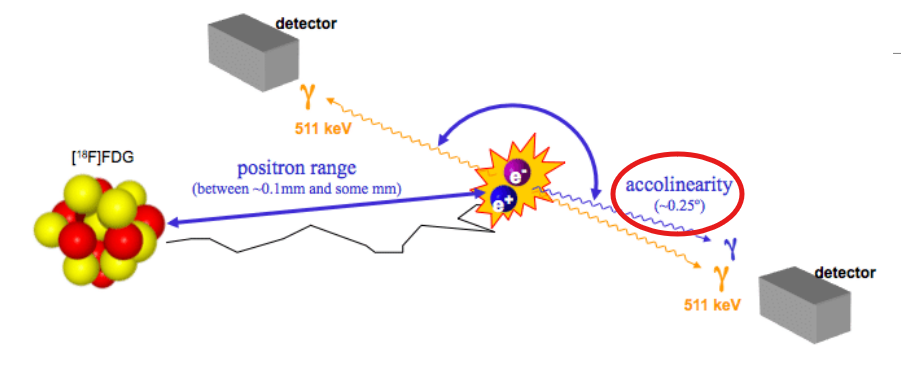
Elaborate on how non-colinearity or acolinearity is a source of error for PET
Our detectors in a PET camera work to pick up on two 511 keV photons that are traveling at a straight distance from one another
With non-colinearity, one of the photons will travel at a slight angle (0.25°)
Of the 3 sources of error in PET, which is one that we cannot fix or correct for?
Non-colinearity as this is a source of error that occurs at the origin of the annihilation event

What is a true coincidence?
This is the type of annihilation event that we want to occur – the detectors pick up on the energies emitted from annihilation directly opposite of each other (180°)
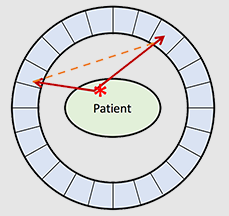
What is a scatter coincidence?
This is when the one of the photons emitted from an annihilation event interacts with something in its path to the intended detectors – causes it to change directions and affects the original line of response → a false line of response is drawn
This will show up on our image as an annihilation event that happened outside of where it is supposed to be
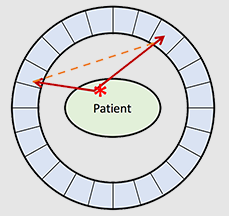
What happens to the energy of the photons if a scatter coincidence happens?
If one of the photons interacts with something on its path to the intended detector, it will lose energy and it may be rejected by the detector as an annihilation event entirely – detector wants two 511 keV photons
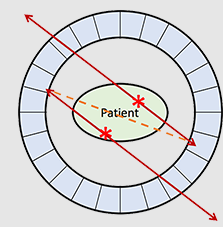
What is a random coincidence?
This is when two annihilation events happen at the same time – this will hit 4 detectors but only 2 will activate and will create a false line of response
However, this line of response cannot be ignored as it fulfills the objective of having two 511 keV photons
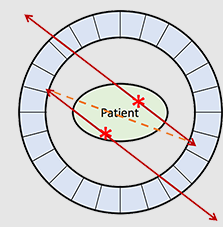
How does a random coincidence happen?
Happens when there is too much radioactivity
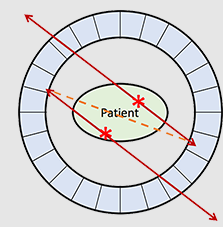
What happens to our images if there are random coincidences occurring?
Will create a bad image as there are too many random events – PET camera cannot differentiate between the many different annihilation reactions happening
What is the new technology in PET that allows us to get an idea of where an annihilation event happened on the line of response?
Time of flight technology
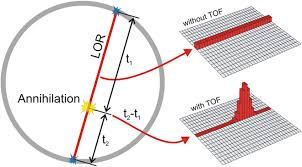
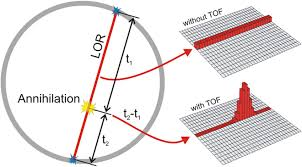
What is time flight technology?
Where the new technology allows us to better determine where an annihilation event happened based on how soon (time) the photon hit the detector – i.e. it taking 0.5 seconds for the right side vs. 1.5 seconds for the left side → annihilation most likely happened more on the right
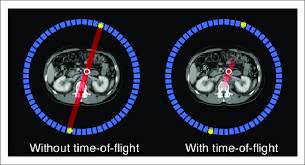
How does time flight technology affect how our images on PET turn out?
It decreases our need for having multiple line of responses – able to use shorter line of responses and get rid of all the bad and excess information that makes the images less clear – better able to focus on what we intend to image
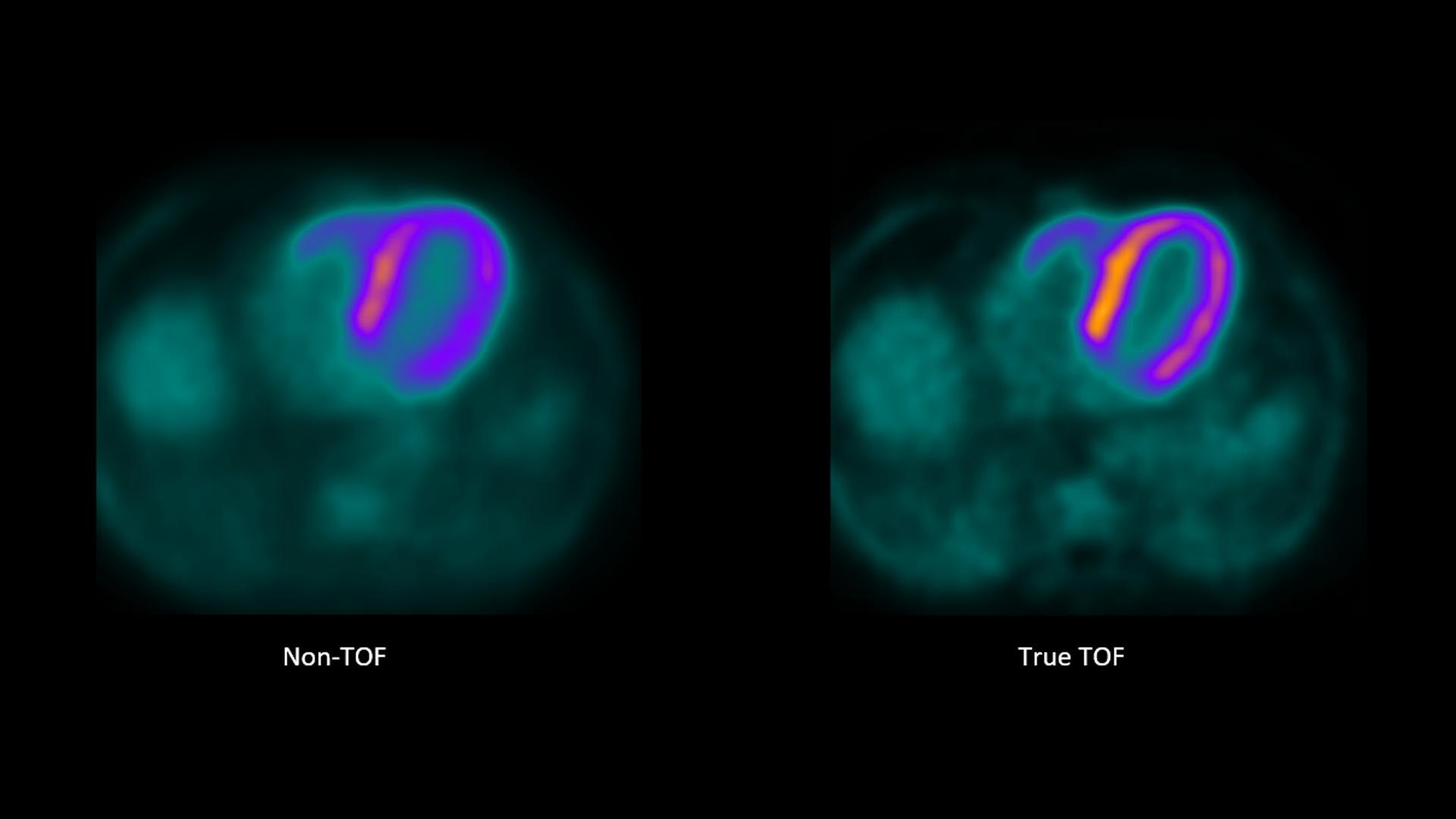
How does time flight technology affect how we dose and image the patient in PET?
If we’re able to eliminate bad information using the new technology, we won’t need to overcome the bad information with good information – able to give less of a big dose and not need to image as long
Why are we able to utilize PET so much now?
More availability of the necessary resources – radiopharmaceuticals, cyclotrons, cameras
Reimbursement
When was the first PET study that got reimbursed? (specific radiopharmaceutical and study)
In 1998 a PET F-18 FDG study for solitary pulmonary nodules was successfully reimbursed by an insurance company
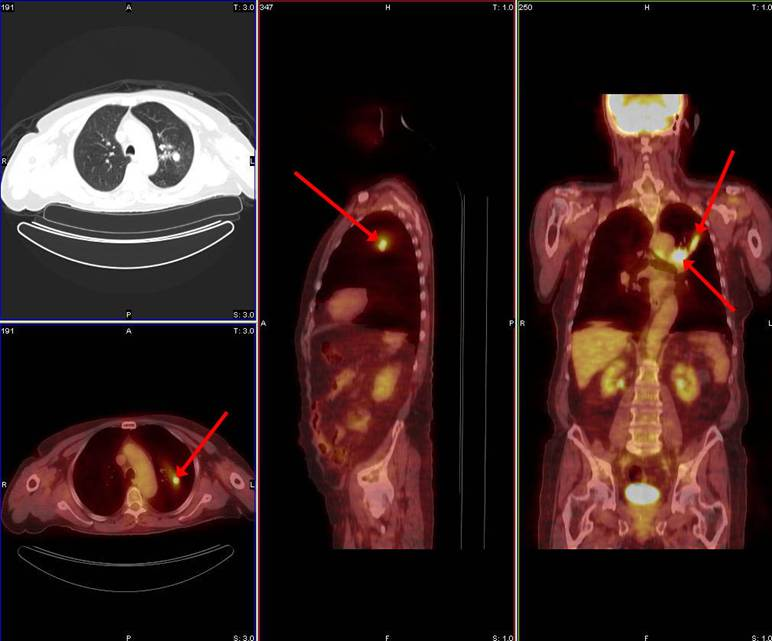
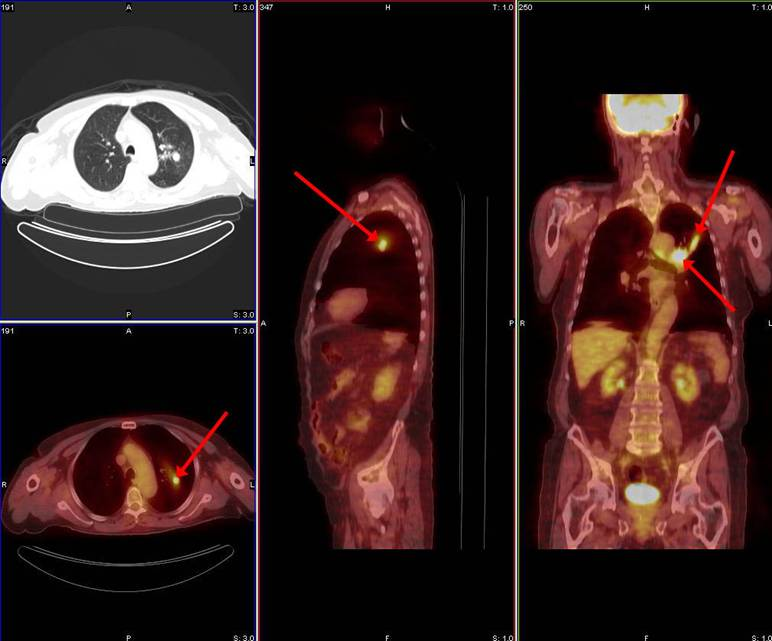
What are solitary pulmonary nodules?
Tumors that can be benign or malignant
Based on the PET scans, biopsies will only be done on the tumors that had high uptake of the FDG
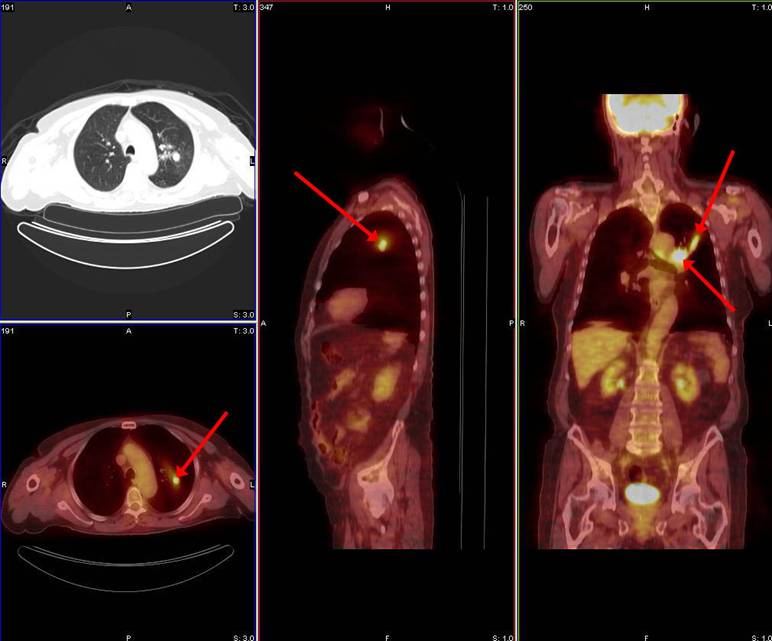
Why were solitary pulmonary nodules reimbursed first by insurance companies?
Before, patients would biopsy all and every nodule that was found as probable for cancer
With solitary pulmonary nodules and PET, it allowed physicians to determine if the nodules were potentially cancerous and if biopsies were even needed – more cost effective
What is the most commonly used radiopharmaceutical in PET?
F-18 FDG
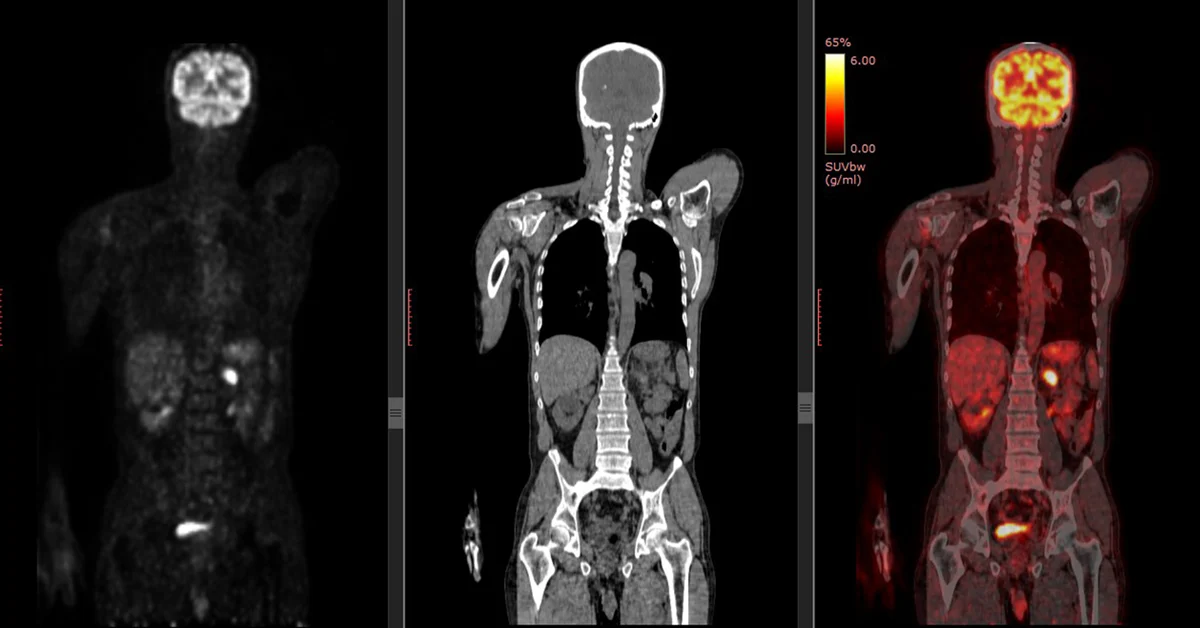
Breakdown what PET/CT is a combination of (what each part specifically scans)
PET – scans the patient’s physiology
CT – scans the patient’s anatomy
What type of process is commonly seen in cancer?
Metabolic process – hypermetabolic
What is metabolism?
The process of taking up glucose and using it as energy
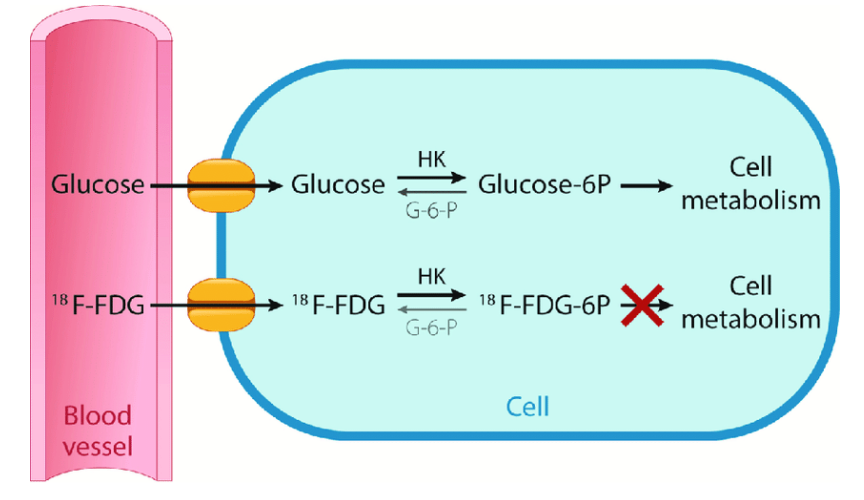
Why do we like to use FDG as a pharmaceutical in PET?
It’s a sugar that is very similar to glucose
As cancer uses metabolic processes, it uses glucose as its main form of energy – we take advantage of this by binding the radioactive material with a pharmaceutical that’s similar in structure to glucose so that we can visualize where the cancer is based on its metabolism
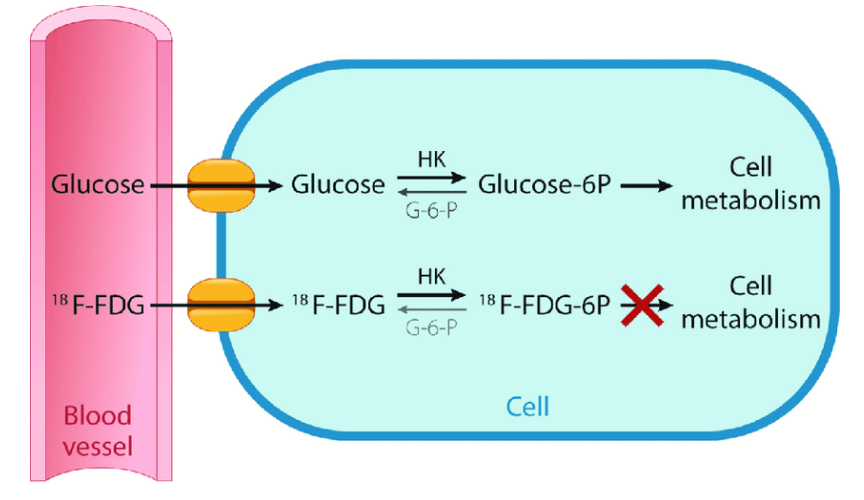
What happens to the FDG when it’s up-taken by the cancer cells?
Instead of breaking down FDG and using it as energy, it will just accumulate in the cancer cell – makes the cancer more visible on our PET images
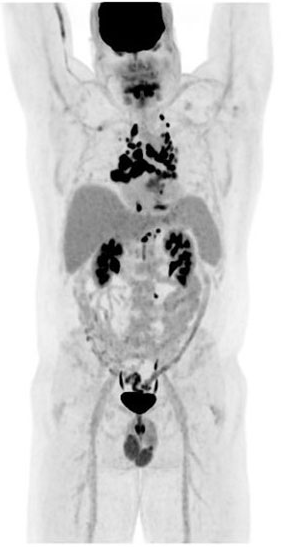
Are there other organs in our body that will uptake the tracer F-18 FDG?
Brain
Kidneys
Bladder
Variable of the heart
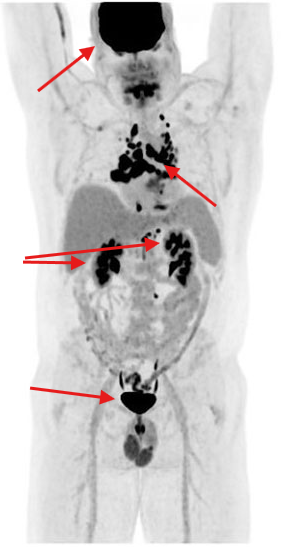
What are 5 limitations that may appear on a PET scan aside from the intended cancer?
Infections – COVID-19
Inflammation
Atelectasis
Healing tissue – post-surgery
Muscle activity
What are some examples of things a patient can do that increases their muscle activity?
Chewing gum
Walking or doing exercise before hand
Reading or falling asleep – rapid eye movement
Name as many things as you can on what we ask the patient to do as preparation for a PET scan and what we do as prep (9)
No strenuous exercise for 24 hours prior
High protein and low carb diet for 24 hours – optional
Well-hydrated – helps in elimination of radiopharmaceutical
Fast for 4-6 hours before injection
If breastfeeding, to pump and store prior
Provide their height and weight as well as their blood sugar levels
After injection, patient will wait for 60-90 minutes
Provide a warm blanket to the patient – brown fat!
Void prior to imaging
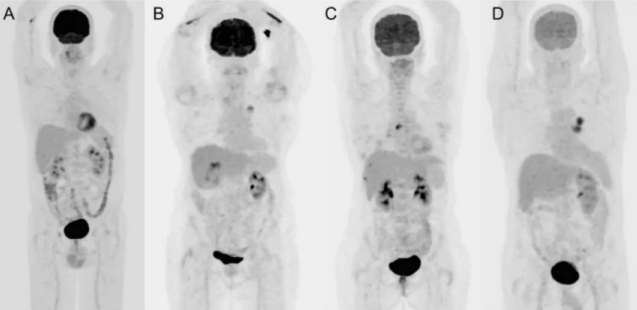
Why do we ask the patient to fast before we inject?
If the patient were to eat, food that contains glucose or carbohydrates will cause F-18 FDG to compete for uptake in the body
Why is it important for us to collect the patient’s height, weight, and blood sugar levels?
We need to calculate out how much of the radiopharmaceutical dose is needed for proper uptake
Need a proper level of blood sugar – if too high, there will be competition between the F-18 FDG with the glucose already present in the body
Why do we ask the patient to wait with us for 60-90 minutes after injection of the dose?
We need to allow for the body and the tumor to properly uptake and accumulate the tracer for us to visualize on the PET images
What is the importance of brown fat and a warm blanket?
Giving the patient a warm blanket will help reduce the activation of brown fat – a type of adipose tissue that can also take up the tracer as it participates in metabolic activity
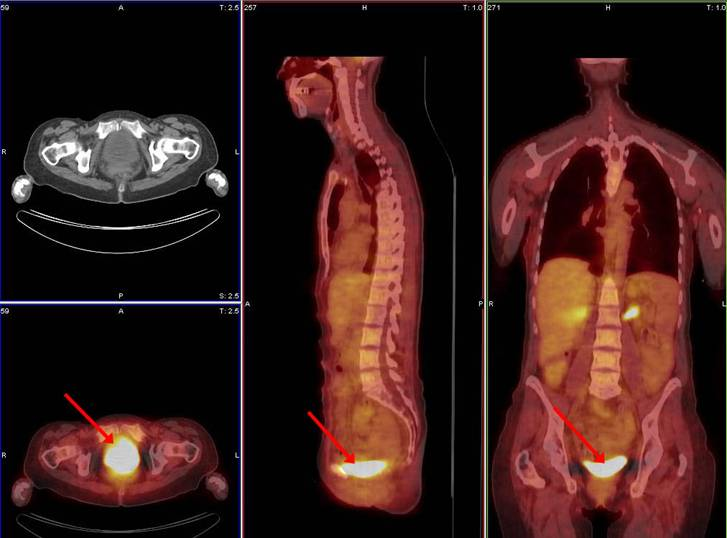
Why is it important for the patient’s to void prior to scanning?
If the patient doesn’t empty their bladder before we scan the PET images, their bladder will be visibly ‘hot’ and interfere with the images
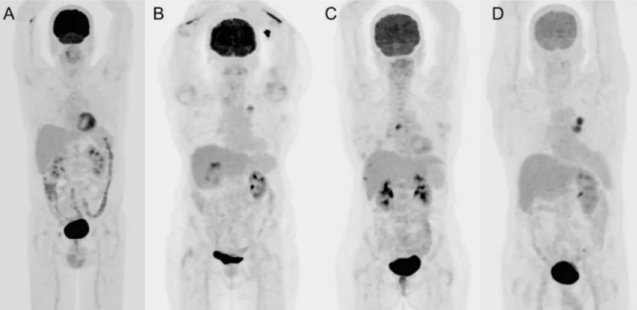
What is the ideal blood glucose level and why?
Ideally we want a blood glucose level less than 120 mg/dL as it allows for better uptake of FDG – not as much competition for the tracer with the glucose already present in the body
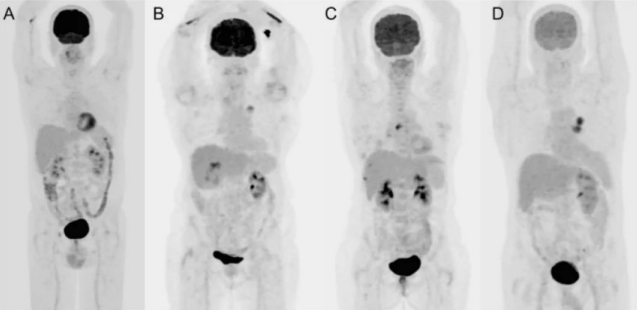
What is the ideal condition that we want the patient to be in regarding their blood glucose levels?
Want the patient to be hypoglycemic – why we ask them to fast!
If we were to perform a PET on a Type 1 diabetic patient, how would we prep and perform the scan? (3)
Want to scan them first thing early in the morning
Have them fast
Patient’s are not allowed to take insulin
If we were to perform a PET on a Type 2 diabetic patient, how would we prep and perform the scan? (3)
Want to scan them later in the morning or in the afternoon
Can eat a light meal early in the morning
Can take oral medication but will have to fast for 4 hours
What are the 4 types of PET acquisitions?
Limited area
Dynamic
Skull-base to mid-thigh
Whole body
When would we use a dynamic acquisition?
Isn’t common – often seen in research to find the ideal radiotracer for a case
What is the skull-base to mid-thigh acquisition?
Most common acquisition for PET imaging
We would start scanning the patient from their eyes → end at their thighs
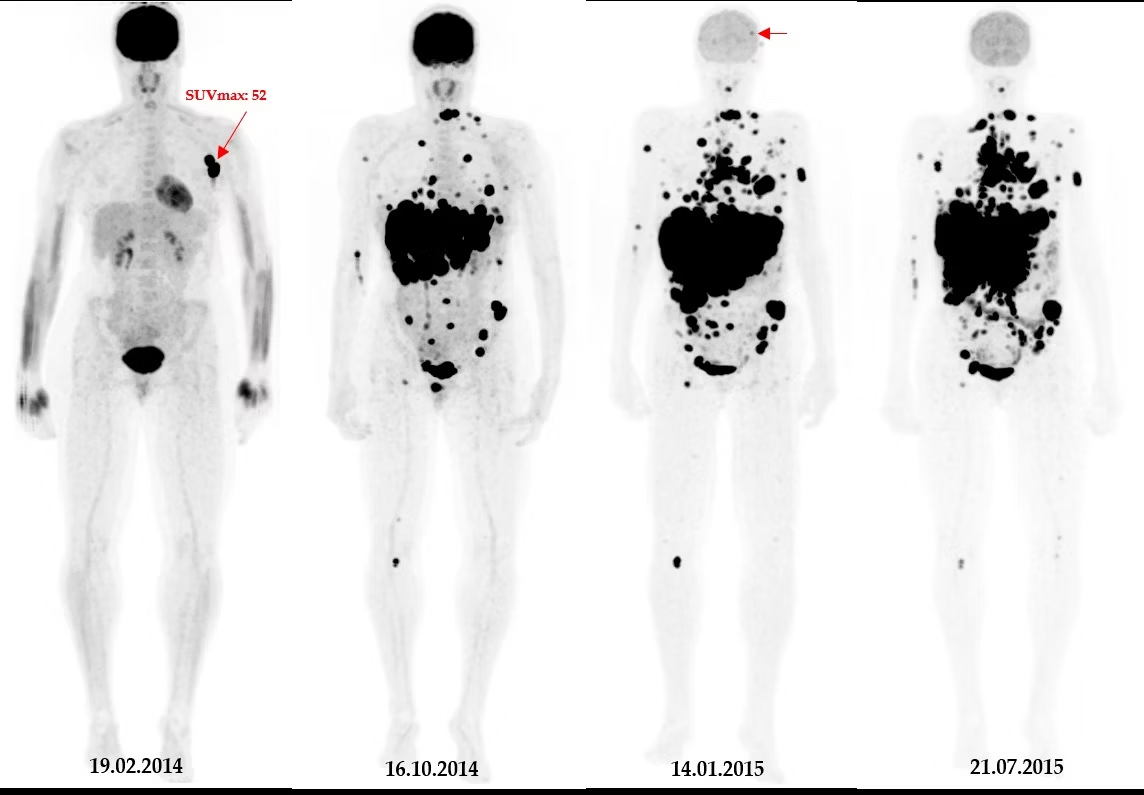
When would we perform a whole body acquisition?
If the patient has melanoma – want to image cancer from head-to-toe
How much of the radiopharmaceutical – F-18 FDG – do we inject?
5-15 mCi and make sure to flush with saline after!
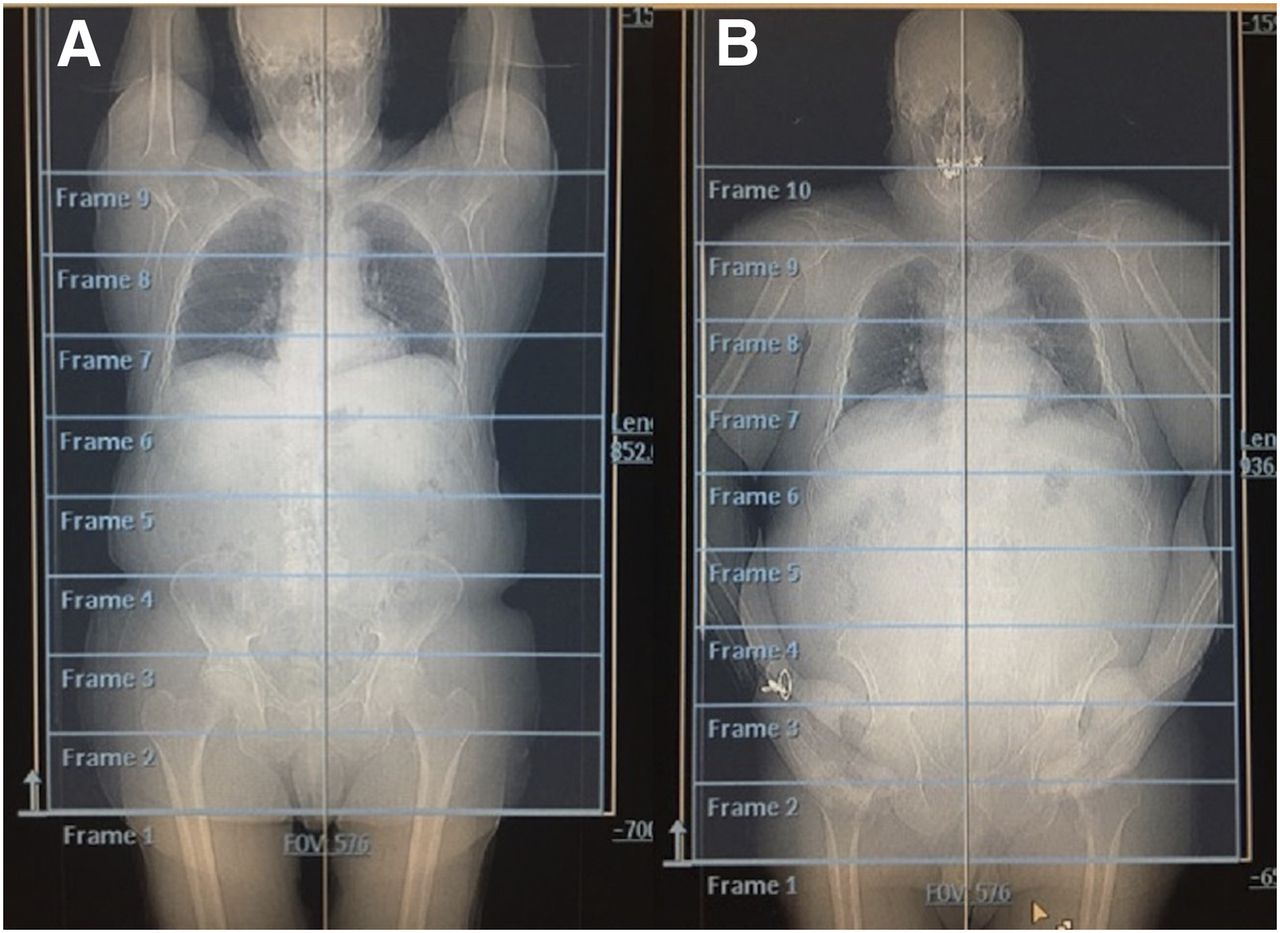
What is a scout?
A quick X-ray or CT that is scanned prior to the PET
It tells the system where we want the PET scanning to start and end – defines the parameters